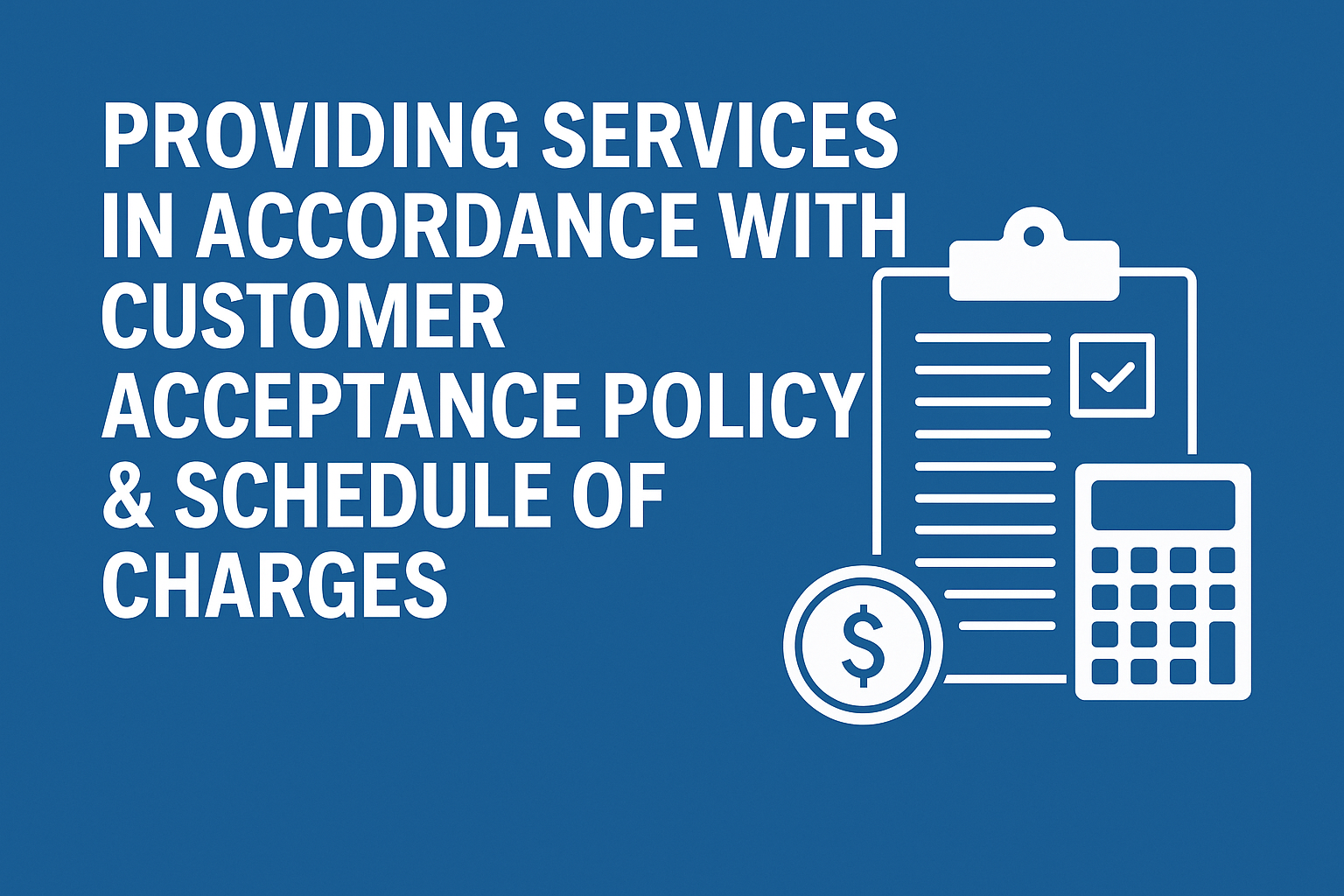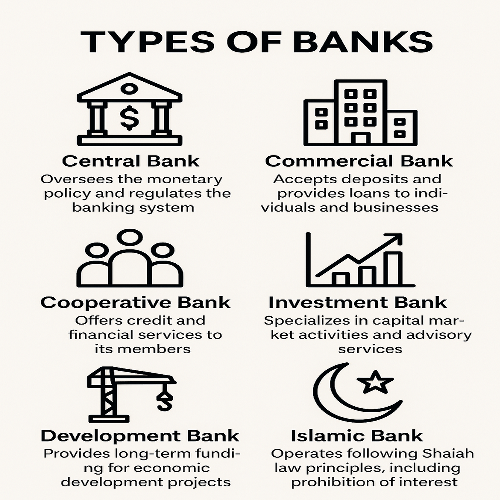Introduction
In the evolving landscape of banking, customer-centric policies have become pivotal. A bank’s commitment to delivering services in line with its Customer Acceptance Policy (CAP) and Schedule of Charges (SOC) reflects both its transparency and professionalism.
What is Customer Acceptance Policy (CAP)?
The Customer Acceptance Policy is a guideline adopted by banks to determine which customers to serve and under what terms. It ensures banks meet regulatory obligations like Know Your Customer (KYC) and Anti-Money Laundering (AML) standards.
Key Elements of CAP:
- Clear identification and verification of customers.
- Assessment of customer risk based on background and transaction behavior.
- Rejecting relationships with high-risk or illegal entities.
What is the Schedule of Charges (SOC)?
The Schedule of Charges refers to the bank’s official list of fees, commissions, and service costs applicable to its products. It is published periodically and provided to customers at account opening or any service enrollment.
Common Charges Include:
- ATM withdrawal fees.
- Account maintenance charges.
- Loan processing fees.
- Cheque book issuance costs.
Importance of Following CAP and SOC
Providing banking services in accordance with these policies fosters transparency, regulatory compliance, and customer trust.
Benefits for Banks:
- Reduced compliance risk.
- Streamlined onboarding process.
- Improved brand image.
Benefits for Customers:
- Clear understanding of fees and charges.
- Assurance of fair treatment.
- Better financial planning due to transparency.
Conclusion
A strong alignment between banking services, Customer Acceptance Policy, and Schedule of Charges is essential for a healthy banking environment. It ensures the bank serves customers ethically, fairly, and with full compliance to national and international standards.




